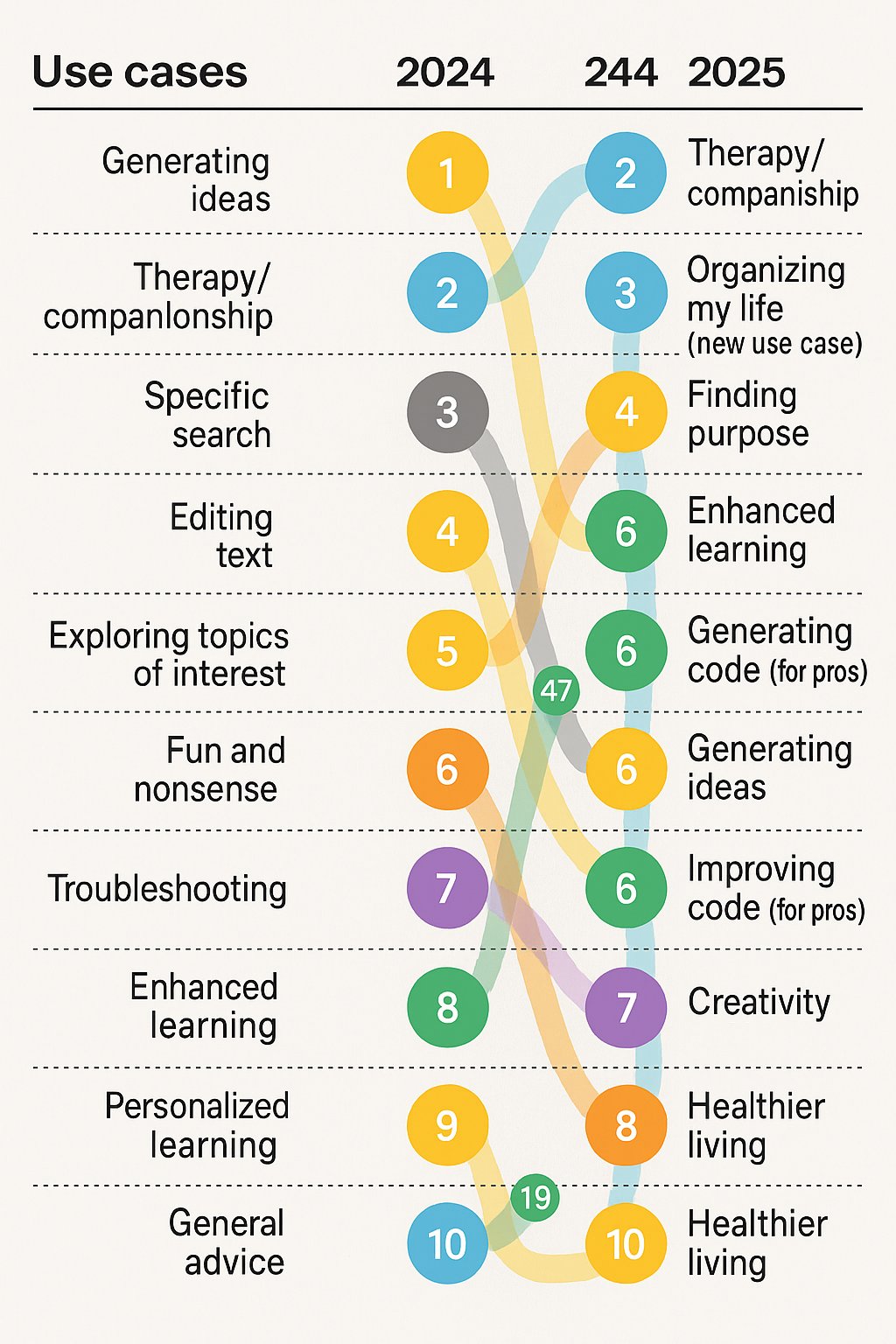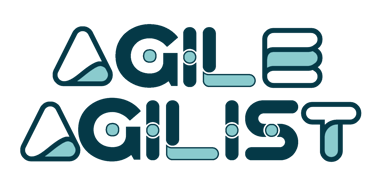The Evolution of GenAI Use Cases (2022–2025)
Over the past four years, the landscape of generative AI (GenAI) has transformed dramatically, evolving from a niche innovation to a cornerstone of both personal and professional life. This journey from 2022 to 2025 reveals not only the rapid adoption of GenAI technologies but also a significant shift in how individuals and enterprises utilize these tools.
Mark Saymen
6/8/20252 min read


The Evolution of GenAI Use Cases (2022–2025)
2022–2023: The Emergence of GenAI
The launch of ChatGPT in late 2022 marked a pivotal moment, introducing the public to the capabilities of GenAI. Initially, usage was predominantly personal—drafting emails, creating content, and exploring creative writing. By 2023, enterprises began experimenting with GenAI, integrating it into customer service, content creation, and software development workflows.
2024–2025: Mainstream Integration and Diversification
By 2024, GenAI had become integral to various business functions. A McKinsey survey indicated that 71% of organizations regularly employed GenAI in at least one business function, up from 65% earlier that year. The applications expanded to include marketing, product development, service operations, and IT. In 2025, the adoption rate soared, with ChatGPT alone boasting 800 million weekly users. This period also saw the rise of AI agents in software companies, automating tasks and collaborating with human employees to enhance productivity .
Top 10 GenAI Use Cases in 2025
Fraud Detection and Security: Utilizing synthetic data to train models for identifying fraudulent activities.
Rapid Software Development: Accelerating coding processes with AI-assisted tools.
Automated Content Creation: Generating marketing materials, reports, and social media content efficiently.
Personalized Marketing Campaigns: Crafting tailored advertisements and recommendations based on user data.
Adaptive Product Design: Creating product prototypes and designs through AI-generated iterations.
Supply Chain Optimization: Predicting demand and optimizing logistics using AI models.
Customer Service Automation: Implementing AI chatbots to handle customer inquiries and support.
Emotional Expression Assistance: Helping users articulate feelings in personal communications, such as birthday messages and dating app conversations .
AI-Powered Gaming Experiences: Enhancing game characters with AI to create dynamic and responsive interactions .
Workplace Productivity Tools: Employing AI agents to automate routine tasks, allowing employees to focus on complex projects .
Shifts in User Behavior and Adoption
The user base for GenAI has expanded significantly. In 2025, 53% of Americans reported using generative models, with 81% applying them for personal tasks and 30% for work-related activities. This widespread adoption reflects a growing comfort with integrating AI into daily routines .
In the workplace, GenAI tools have become ubiquitous. Employees across various sectors, including law, banking, and medicine, utilize chatbots like ChatGPT for drafting communications and reports. However, this reliance raises concerns about the authenticity of AI-generated content and the potential erosion of personal voice in professional settings
Looking Ahead
The trajectory of GenAI suggests continued growth and integration into diverse aspects of life and work. As technology advances, we can anticipate more sophisticated applications, from enhanced creative tools to more intuitive AI agents. However, this evolution also necessitates ongoing discussions about ethical considerations, data privacy, and the balance between AI assistance and human creativity.
In summary, the period from 2022 to 2025 has been transformative for generative AI, marking its transition from a novel technology to an essential component of modern society.
